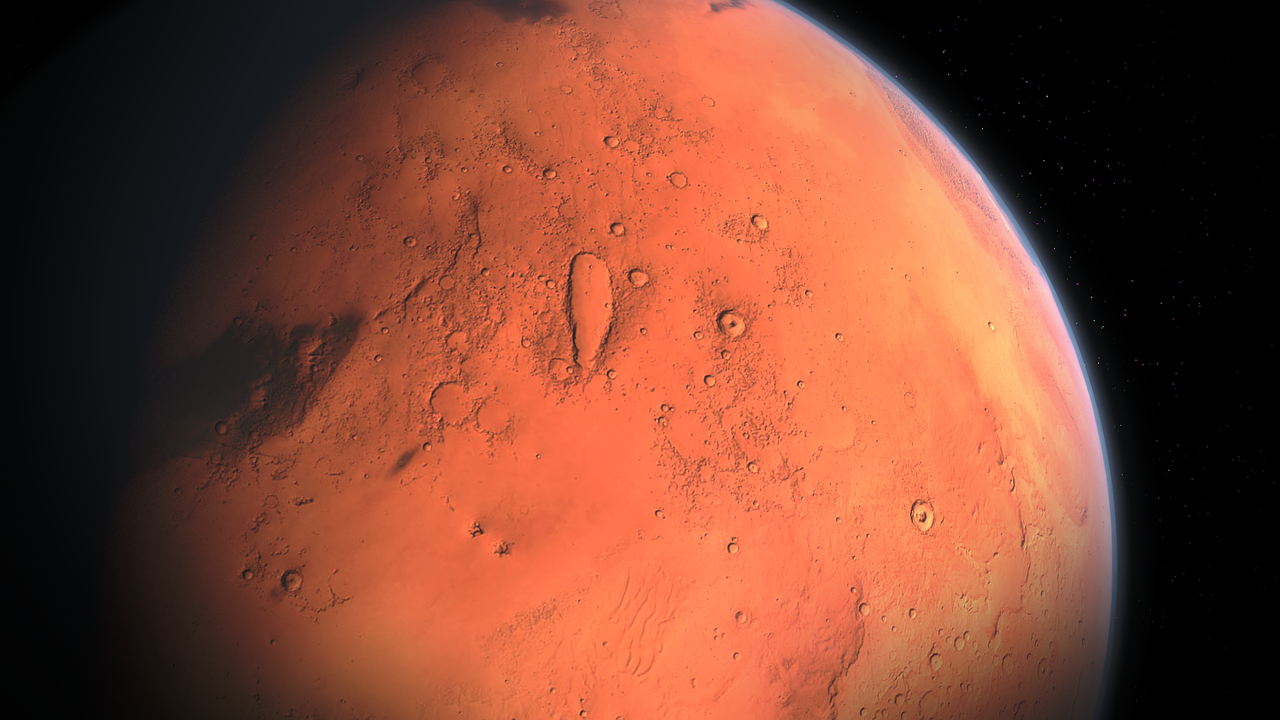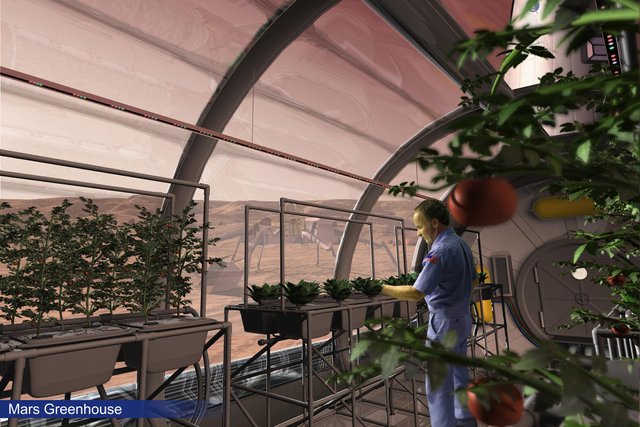Colonizing Mars #1: Could Mars soil be used to cultivate crops?
Since many decades ago, Humankind has always thought/desired to accomplish high level feats. One high mark was certainly achieved when humankind first stepped on lunar ground. On July of 1969, Neil Armstrong placed the USA flag on the moon [1].
Since then, the ambition to achieve even higher feats grew and grew. The main goal is now to put the first human on Mars, the red planet, with posterior colonization on mind.
For this, some missions to study this planet have taken place already, while others are still ongoing. The main goals were essentially to look for sign of water and habitable conditions, search for any signs of life and ultimately prepare for human exploration. For example, the Curiosity Mars Rover (2012) with the goal to access if Mars ever had the conditions to support life [2].
The race to reach Mars has been ongoing at full speed with NASA, Space-X, Mars One and others working to achieve it within the next decade(s).
However, one of the main issues related with Mars colonization will be auto-sustainability.
Within this topic, I’ll focus this work on food production and will write about different related topics. In this article, in particular, I’ll write about plant/crop cultivation. Specially, with the goal of answering to the following questions:
- How important would plants be on Mars colonization?
- Could Mars’ soil be viable for plant cultivation?
2.1. Would the plants/crops’ growth rate be identical to what’s observable on Earth? - If growth is successful, could these plants be edible and safe for human consumption?
1. How important would plant based food be in Mars colonization?
According to Raymond Wheeler from NASA, having plants on a mission to Mars could benefit the crew on several levels. These include:
- Improvement of the crew’s nutrition by adding several essential bioavailable nutrients.
- Add meal variability.
- Keep crew’s morale up. Plants could give a sense of being on Earth.
- Air regeneration and water recycling [3][4].
2. Could Mars soil be viable for plant cultivation?
To study and evaluate this important aspect, it was important to firstly know what Mars’s soil chemical composition was.
This was achieved when the Mars Pathfinder mission’s rover (Sojourner) first landed on the planet’s surface in 1997. The rover was equipped with several scientific instruments. One of them was an alpha proton X-ray spectrometer, which was used to determine the soil elemental composition. After that, some Mars soil simulants were developed [5][6].
Wamelink et al, used one of these simulants (JSC-1A Mars - based on volcanic ash from Hawaiian volcanoes) to test different plants/crops growth rates against Earth’s soil from the Rhine river.
In total, 14 different species of three main groups were selected for testing. Four nitrogen fixers, four crops and six wild plants. Some of them included wheat, tomatoes and garden cress.
The main finding was that all the tested plants were able to grow on the Mars simulant soil for a period of 50 days (See figure 2 from the article here). Therefore showing evidence that it could be possible to use Mars soil as a medium for plant growth sustainability [7].
2.1. Would the plants/crops’ growth rate be identical to what’s observable on Earth?
From the findings of this particular group, it was observed that most of the plants tested on Mars soil simulant had a higher growth rate compared to the controls. Also, the biomass was on average higher at the end of the 50 day experiment, compared with the control (See figures 3 and 4 from the same article here).
Although these findings could indicate that the tested Mars simulant was indeed adequate and better for plant/crop growth, some points were noted about the possible reason for this result.
The Mars simulant was able to better hold water, which could be a result from a higher level of organic matter on this simulant. Since, organic matter is much better at retaining water than bare sand. Although Mars soil lacks this type of composition, it is hypothesized that organic waste not only from crops, but also the human crew could be used as additives. Adding not only organic matter, but also micro-nutrients.
The control (Rhine River’s soil) was not the absolute best substrate for optimal plant growth [7].
3. If growth is successful, could these plants be edible and safe for human consumption?
This aspect is clearly something to have in consideration. The harvested plants weren’t readily eaten due to the fact that the Mars simulant mostly have high levels of heavy metals, including lead and cadmium.
Therefore, some of the obtained plants had to be tested to access their heavy metal’s levels. According to the same study, the subjects had similar levels compared with the controls and therefore were estimated to be edible (further tests to follow). For example, the content of heavy metals on some harvested peas developed on Earth’s soil (ES) and Mars soil simulant (MS) were as follows:
Values in mg/kg:
Iron: ES - 84; MS – 67
Cadmium: ES – 161; MS – 15
Chrome: ES – 11; MS – 19
Lead: ES – 12; MS - 3
In conclusion, the answer to all the questions was mostly positive. However, this only gave us some evidence about the possibility of using Martian soil for crops agriculture in Mars. More studies and several conditions would need to be done and considered, respectively, in order to give an absolute answer on this topic.
Next part coming soon… :)
Note: I’ll leave the link for a crowdfunding initiative for the same research group I mentioned above. They’re trying to test this topic even further. Just in case you might be interested ofc. (Disclaimer: I have no affiliation/relation with them. I just found them while researching for this work and decided it would be correct to mention it and help them somehow.)
Thanks for reading! :)
Sources:
Image 1. Mars
Image 2. NASA/Human Systems Engineering and Development Division
Image 3. JSC-1A Mars
1. NASA website, Apollo 11 Mission
2. NASA website, Curiosity Mars Rover Mission
3. Wheeler, Raymond; (2014) Growing Plants for Supplemental Food Production on a Mars Fly‐By Mission, Conference presentation
4. Wheeler, Raymond; (2017) Agriculture for Space: People and Places Paving the Way, Open Agriculture, 2:14:32
5. Mars.NASA website, Mars Pathfinder
6. Foley, C. N., T. Economou, and R. N. Clayton (2003), Final chemical results from the Mars Pathfinder alpha proton X-ray spectrometer, J. Geophys. Res., 108, 8096, doi:10.1029/2002JE002019, E12.
7. Wamelink, G.W. & Frissel, Joep & Krijnen, Wilfred & Verwoert, Rinie & Goedhart, Paul. (2015). Can plants grow on Mars and the moon: a growth experiment on Mars and moon soil simulants, PLoS ONE 9(8): e103138. doi:10.1371/journal.pone.0103138
8. Wageningen University Crowdfunding Website, Project: Can we safely eat plants grown on Mars?, News: Press Release, Date: 24th June 2016


Interesting post, well done.
But I have to add: The main question about the whole Mars colonization would still be: why spend all this resources on colonizing a dead planet when we could use it to save our living planet first?
test: @OriginalWorks
Thanks for your interest!
Yes, I agree with your point. That will always be the main drawback and counter-argument against the Mars projects.
I would definitely prefer the resources to be applied differently. There is a lot to tackle here first.
Nonetheless, I would expect that all these projects could at least help us make huge advancements in science and technology, so we could possibly transfer them to solve our problems here.
That would be the optimum. Let me state that I share the dream and fascination of colonizing space and science fiction finally come true. I hope that one day we'll be at a point where this seems the wisest allocation of resources.
But until then, there's just so lot to do in reality...
The @OriginalWorks bot has determined this post by @onybis to be original material and upvoted it!
To call @OriginalWorks, simply reply to any post with @originalworks or !originalworks in your message!
Hi, I found some acronyms/abbreviations in this post. This is how they expand:
Cool! I follow you.
Congratulations @onybis! You have received a personal award!
Click on the badge to view your Board of Honor.
Do not miss the last post from @steemitboard:
Congratulations @onybis! You received a personal award!
You can view your badges on your Steem Board and compare to others on the Steem Ranking
Do not miss the last post from @steemitboard:
Vote for @Steemitboard as a witness to get one more award and increased upvotes!